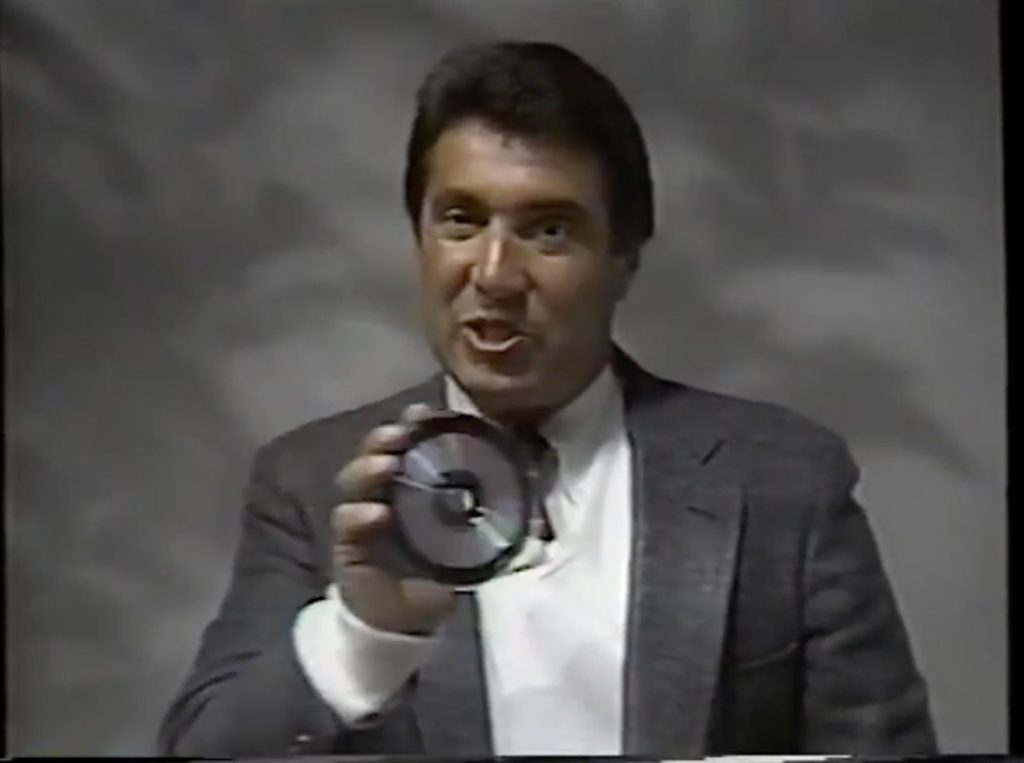
Forty-one years ago, I was a young newlywed, having just married my first wife, Joan (inside joke, she’s still my wife!), the year before.
Joan was an account executive at Wisconsin Telephone. A local furniture store was expanding and she excitedly took me to meet their CEO, Lenny Mattioli.
I rarely watched TV, so I wasn’t very aware of Crazy TV Lenny. But I was impressed when we sat down in his new 300,000-square-foot showroom, across the parking lot from their old 100,000-square-foot store.
Lenny wasn’t very old then, maybe 35, and that day he told me the story of how he built his company. He had been a chemical engineer at Kodak in Rochester, New York. While that might have been a good job, the truth was, he was burned out. Around that time, his older brother, who owned a small TV repair shop in Madison, Wisconsin, found out he had terminal cancer. On his deathbed, he asked Lenny to take care of his customers.
So the burned-out engineer moved to a dusty little storefront in Madison that had a bunch of old TVs, radios, and stereos in various states of disrepair. In the process of reviving this little business, Lenny came up with some ideas about how to sell his merchandise, including giveways that actually made him money. I really don’t remember all the details, but one story in particular stood out.
In 1978–79, Marantz, a big stereo and radio company back then, had made some audiophile stereo receivers. They priced these high-end receivers at $200 each wholesale, with a retail sticker price of $400. Unfortunately, Marantz found out that there wasn’t a big market for $400 receivers, even if they were good quality.
So Marantz was stuck with thousands of them. When Mattioli walked into their warehouse, he found shelves going up to a high ceiling with rows and rows of receivers as far as the eye could see, like the warehouse at the end of Raiders of the Lost Ark. He offered $100 for each receiver. Marantz accepted, delighted to cover their losses.
Then Crazy TV Lenny got on TV and told the viewers, “Marantz made these high-end audiophile receivers to sell for $400, but now you can buy them from me for only $200!” The receivers flew out the door, and Lenny made a bunch of money.
But what stuck with me was the tagline that always ended his commercials: “How do we do it? We buy right!”
Near the end of our meeting, while sitting on sofas in his new showroom, Lenny explained that when he bought at the right price, he felt he’d already made money.
When something is for sale at a very low price, like those receivers, there’s almost always a good reason for it. If you know the reason and can work with it, there’s an opportunity.
No matter what you do, there’s always risk. If you don’t buy, you risk a missed opportunity. If you do buy, you risk losing money. The question is, how to we stack the odds in our favor? We all do things to work the odds in our favor, whether it’s exercising in hopes of living longer or lifting weights to improve our sports performance.
In the world of investing, one way to work the odds in our favor is to look for opportunities to buy low. It takes work and courage. Crazy TV Lenny didn’t find those Marantz receivers by accident. He was looking for that kind of opportunity. And it took both courage and confidence to buy thousands of receivers that Marantz had not been able to sell.
When economist and investor Benjamin Graham wrote about how to find these opportunities in the stock market, he said finding them will give you a “margin of safety” when you buy. This isn’t hard to understand. If a stock is worth $5 a share and it’s trading for $5 a share, your risk is that it goes to zero and you lose $5. Maybe you have reason to believe it could be worth $10 a share within a year. You have identified a 1-to-1 opportunity. You have as much to lose as you envision you have potential to gain.
But if for some reason the price of that stock goes down to $2.50 per share, assuming you still think it can go to $10 per share, you’ve now moved the odds from 1-to-1 in your favor to 3-to-1 in your favor. While you can now lose $2.50 per share, your imagined potential gain is $7.50 per share.
You won’t be right all the time. Crazy TV Lenny wasn’t right all the time. But if you can reduce the size of the risk relative to the potential reward, well, who wouldn’t want to do that?
Hal Masover is a Chartered Retirement Planning Counselor and a registered representative. His firm, Investment Insights, Inc is at 508 N 2nd Street, Suite 203, Fairfield, IA 52556. Securities offered through, Cambridge Investment Research, Inc, a Broker/ Dealer, Member FINRA/SIPC. Investment Advisor Representative, Cambridge Investment Research Advisors, Inc., a Registered Investment Advisor. Investment Insights, Inc & Cambridge are not affiliated. Comments and questions can be sent to hal.masover@emailsri .com. These are the opinions of Hal Masover and not necessarily those of Cambridge, are for informational purposes only, and should not be construed or acted upon as individualized investment advice. Investing involves risk. Depending on the types of investments, there may be varying degrees of risk. Investors should be prepared to bear loss, including total loss of principal. Past performance is no guarantee of future results.
Indices mentioned are unmanaged and cannot be invested in directly.
